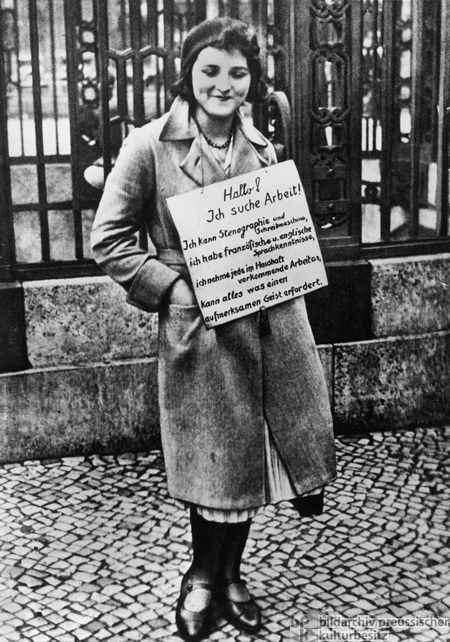













INTRODUCTION | DOCUMENTS | IMAGES | MAPS | EDITOR
|
The stereotypes of the “New Woman” that developed during the Weimar era took a variety of forms – flapper, garçonne, girl. With the introduction of new technologies, such as the typewriter and the telephone, yet another stereotype came into existence: the working woman as office worker, i.e. secretary or typist. The image was reinforced in fashion magazines, illustrated weeklies, and films such as Wilhelm Thiele’s Die Privatsekretärin (1931) and Richard Oswald’s Arm wie eine Kirchenmaus (1931), both of which presented female office workers as role models. With the onset of the world economic crisis and depression of 1929, unemployment affected Germany’s white-collar population to a greater extent than ever before. Young, semi-skilled women were among those who suffered most. The photograph below features a young unemployed stenotypist in search of office work. The sign around her neck reads: Hello!
© Bildarchiv Preußischer Kulturbesitz |
 print version
print version return to image list
return to image list previous image
previous image
